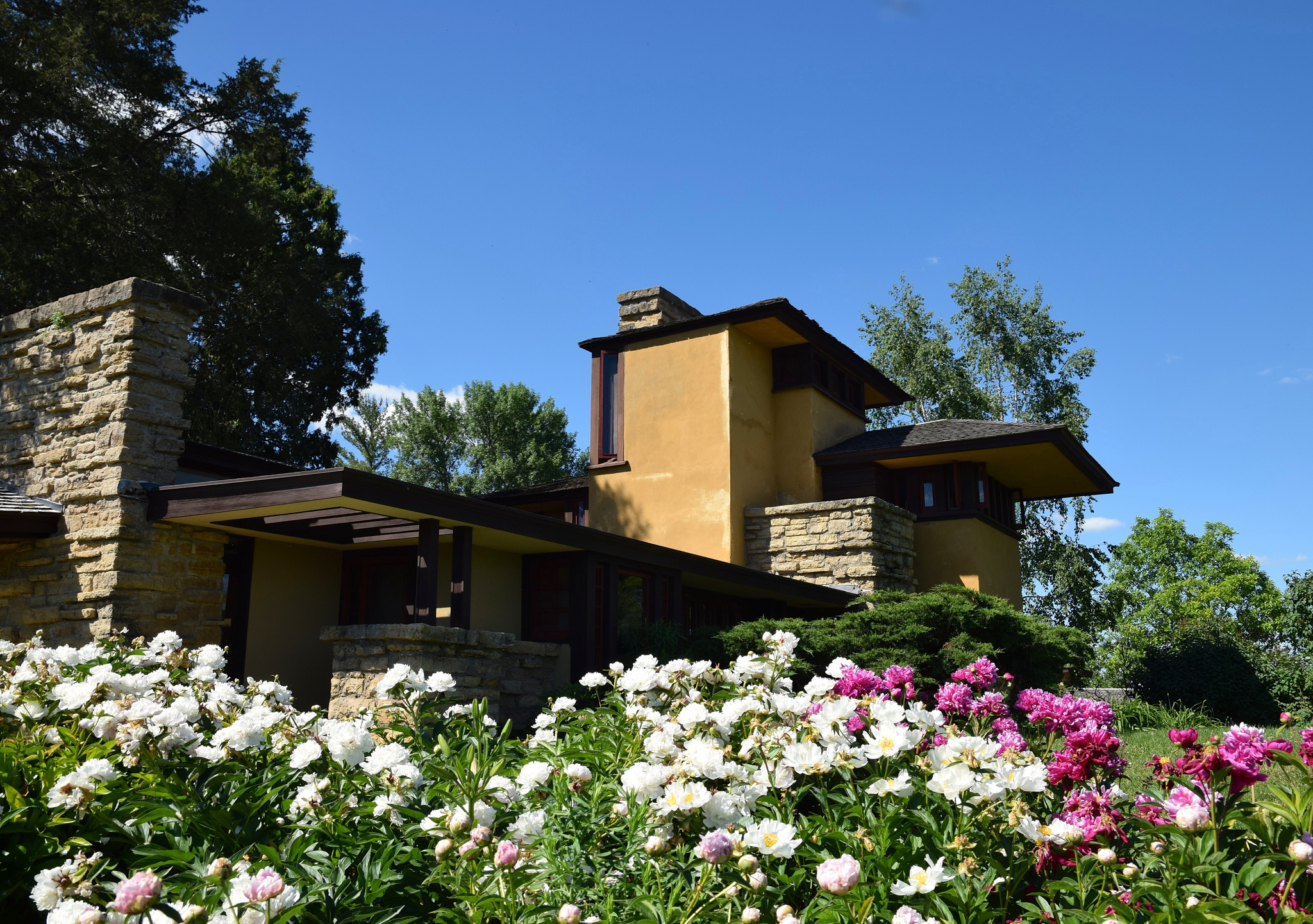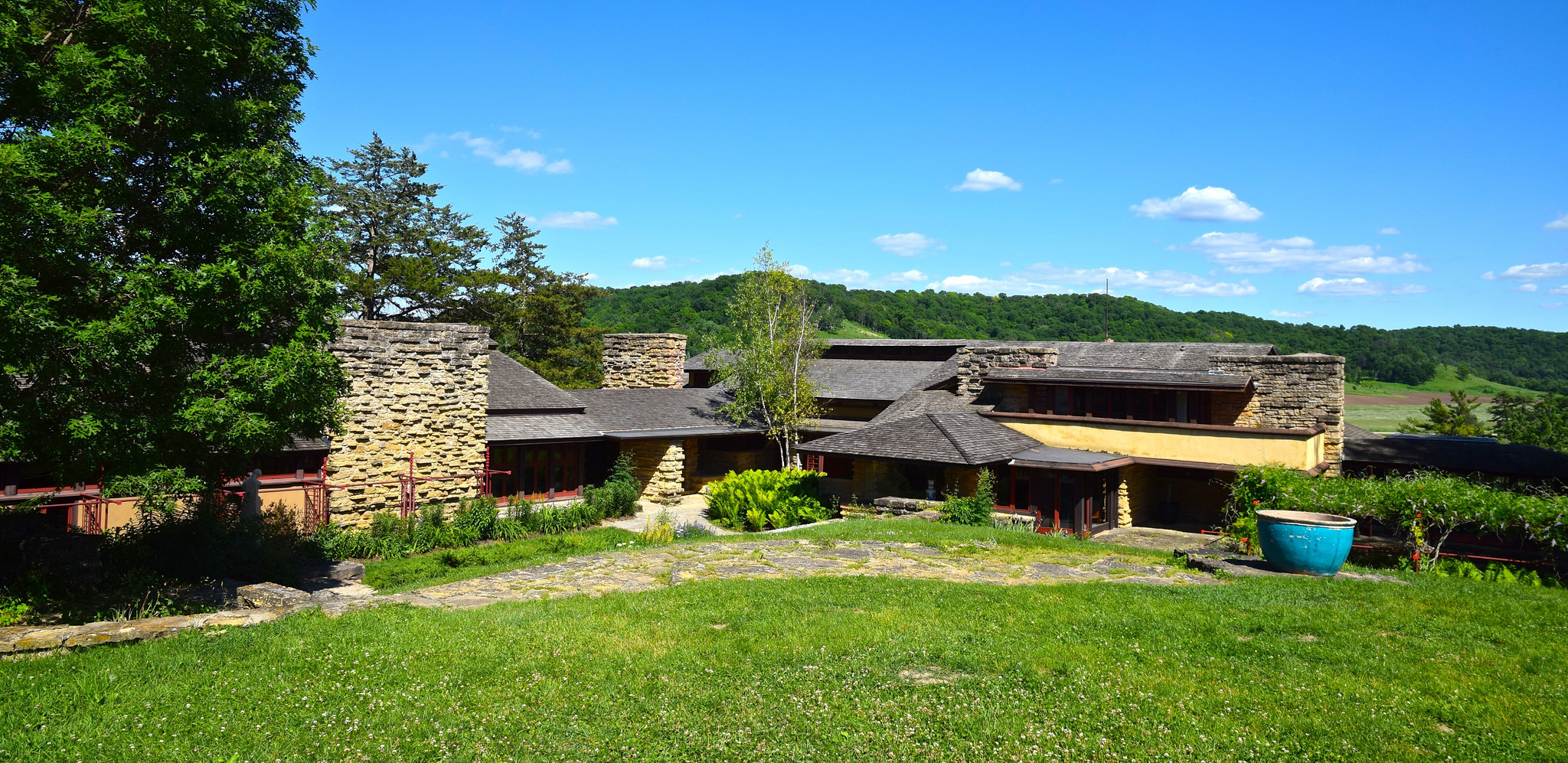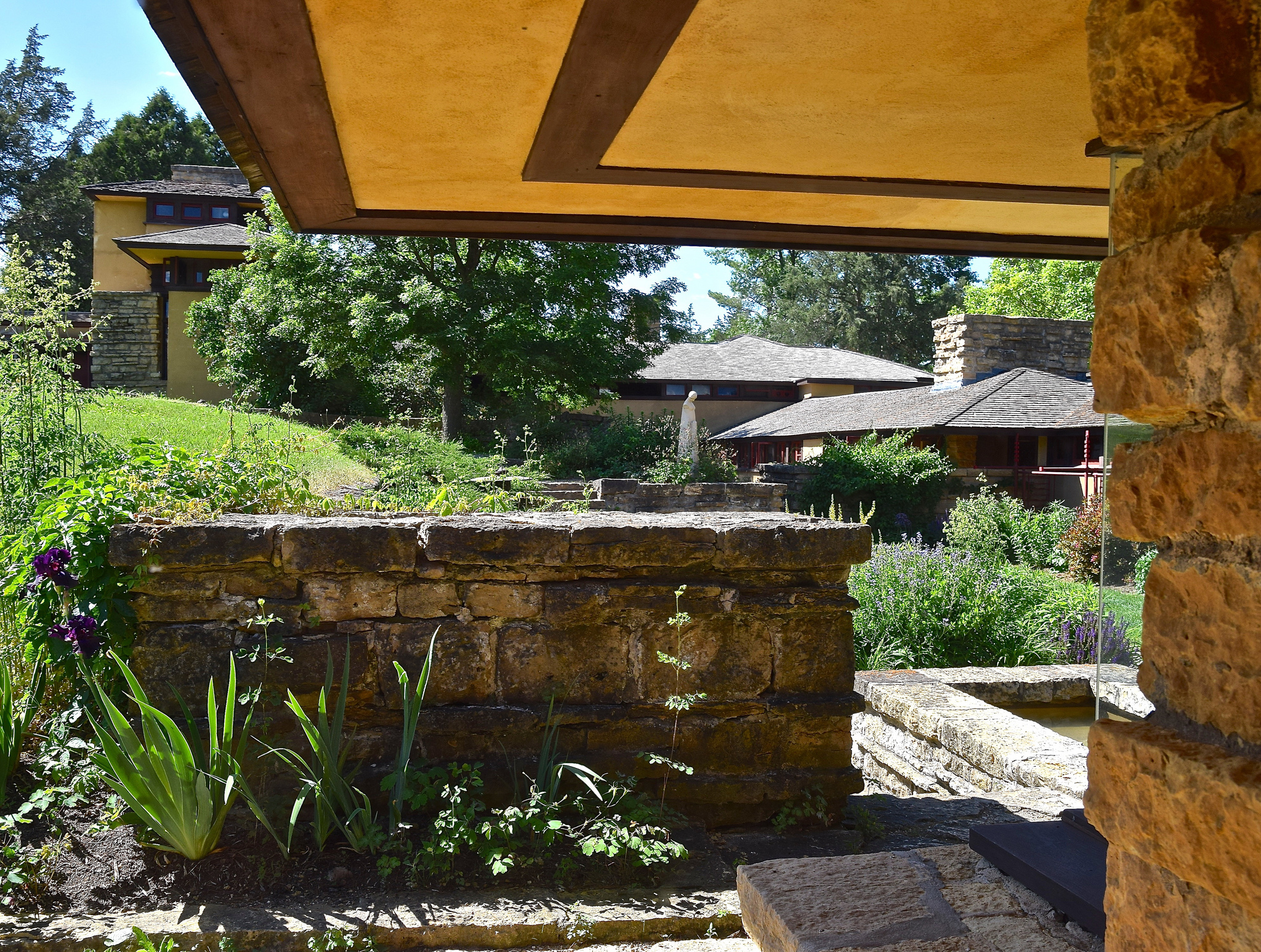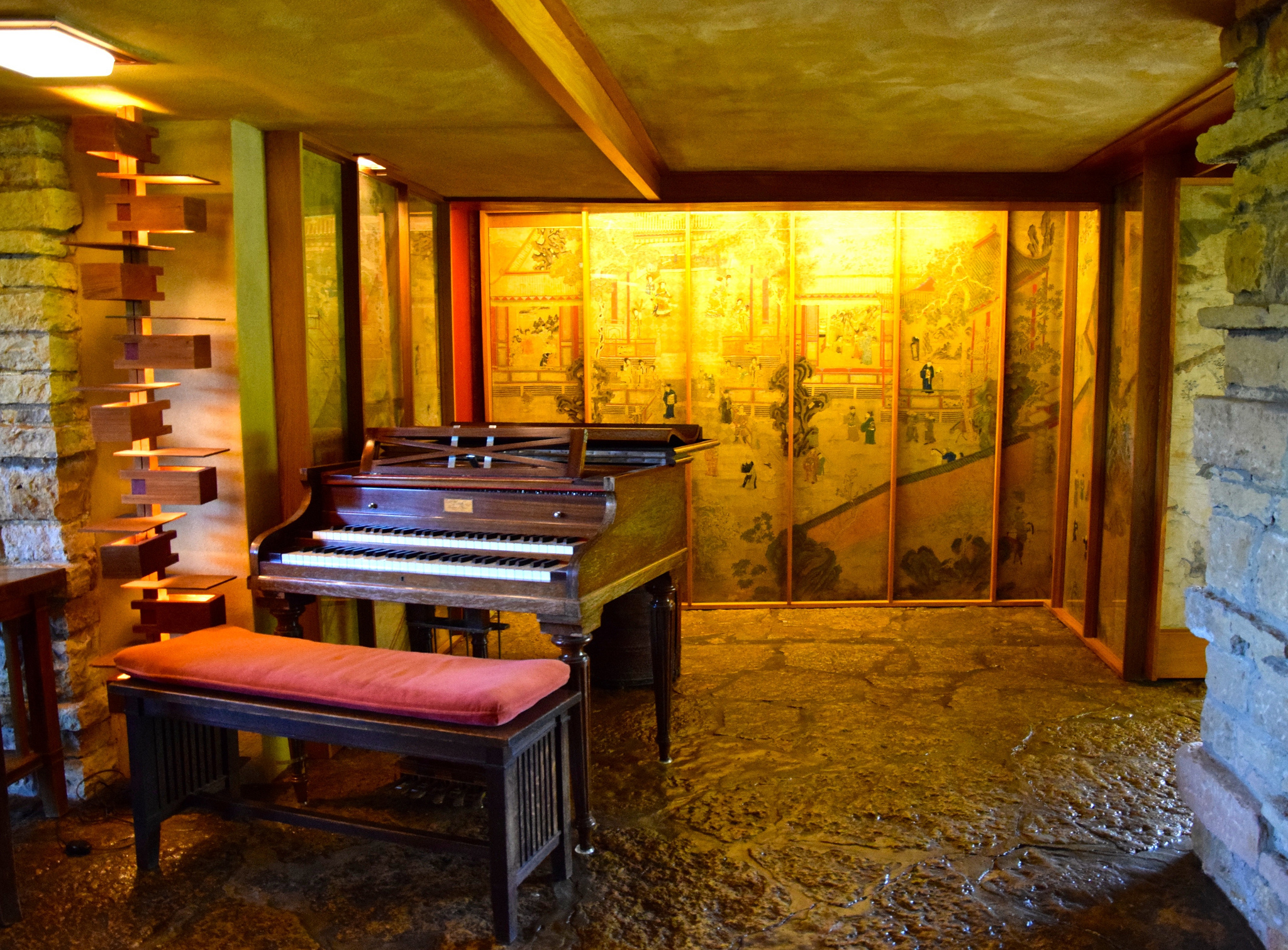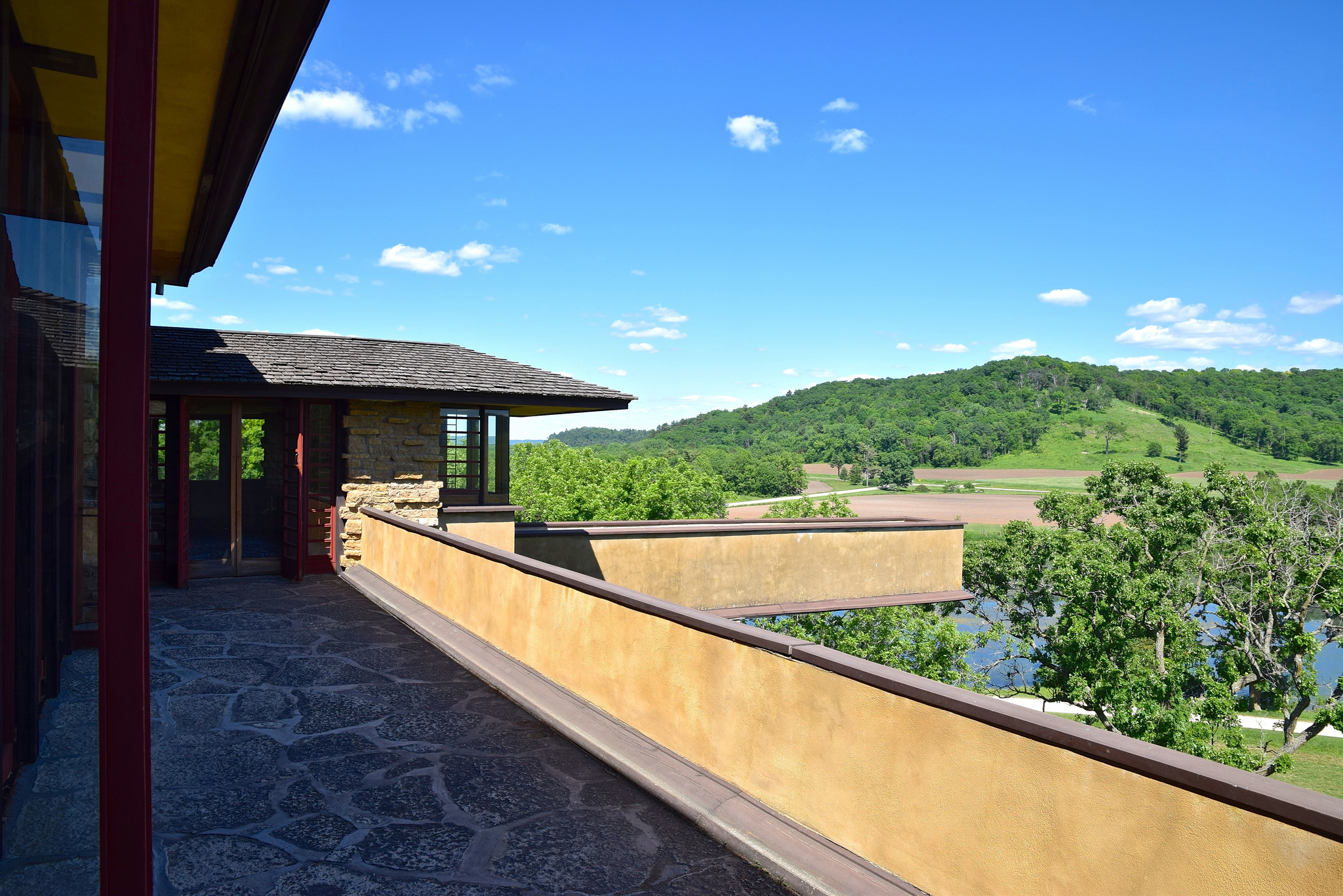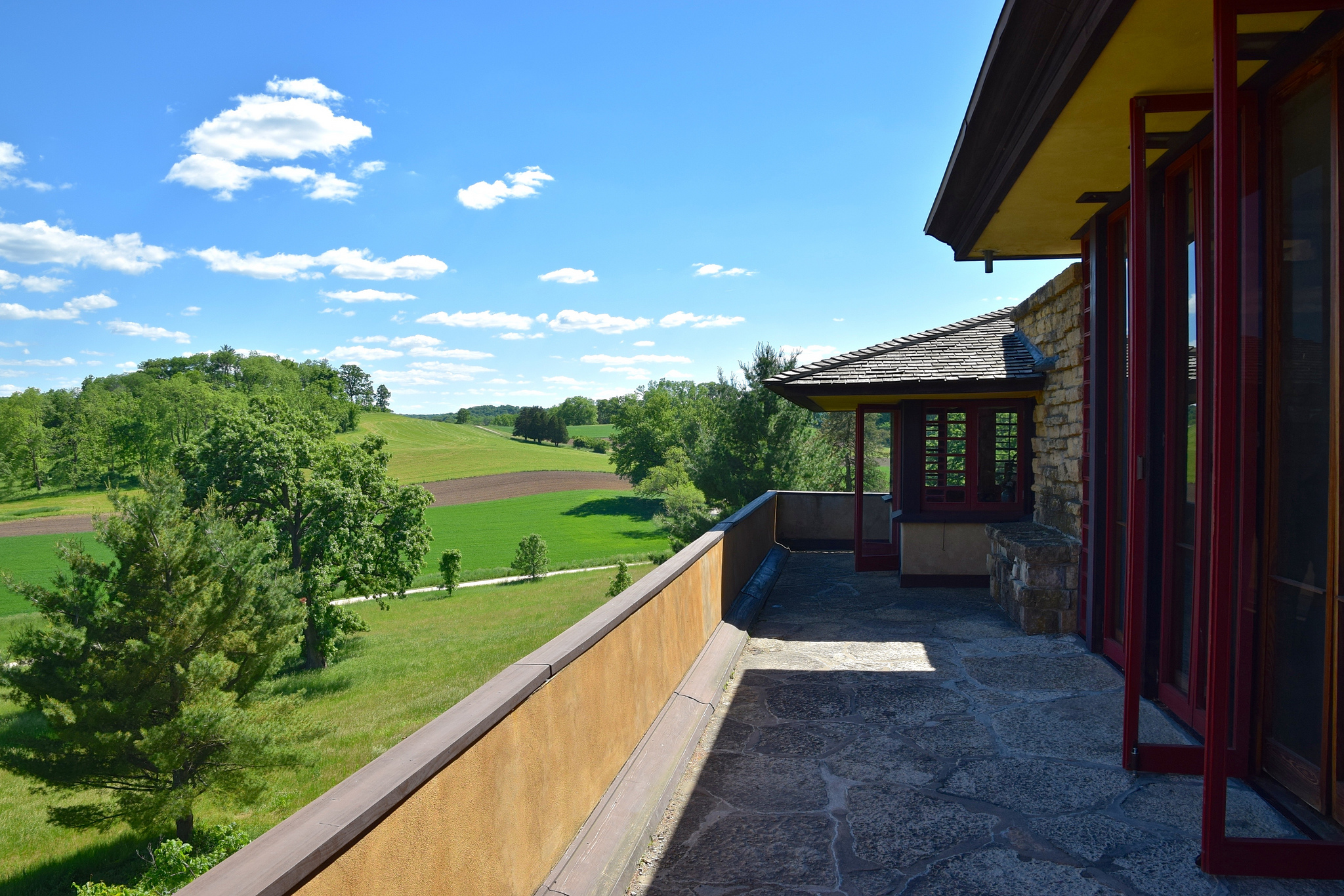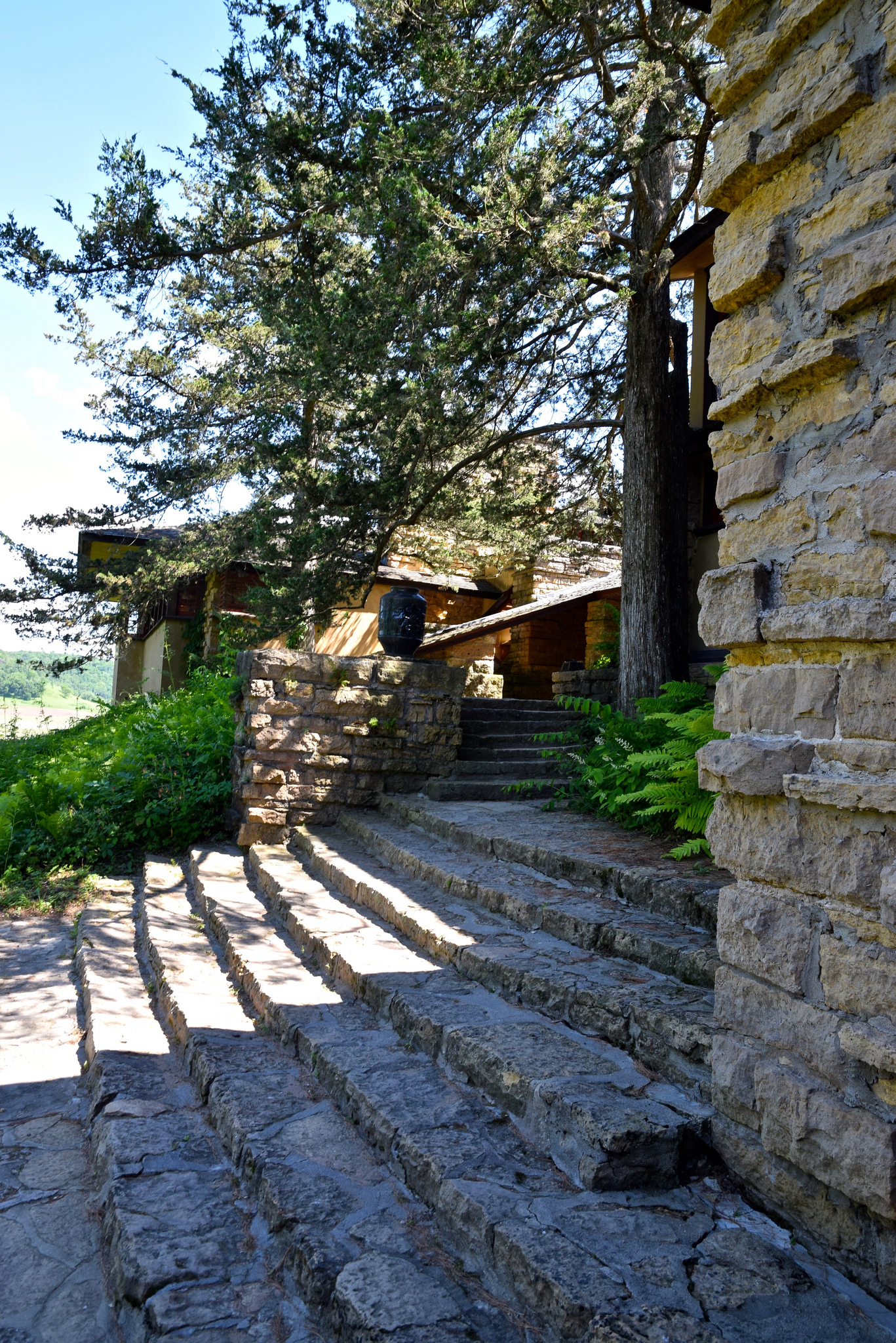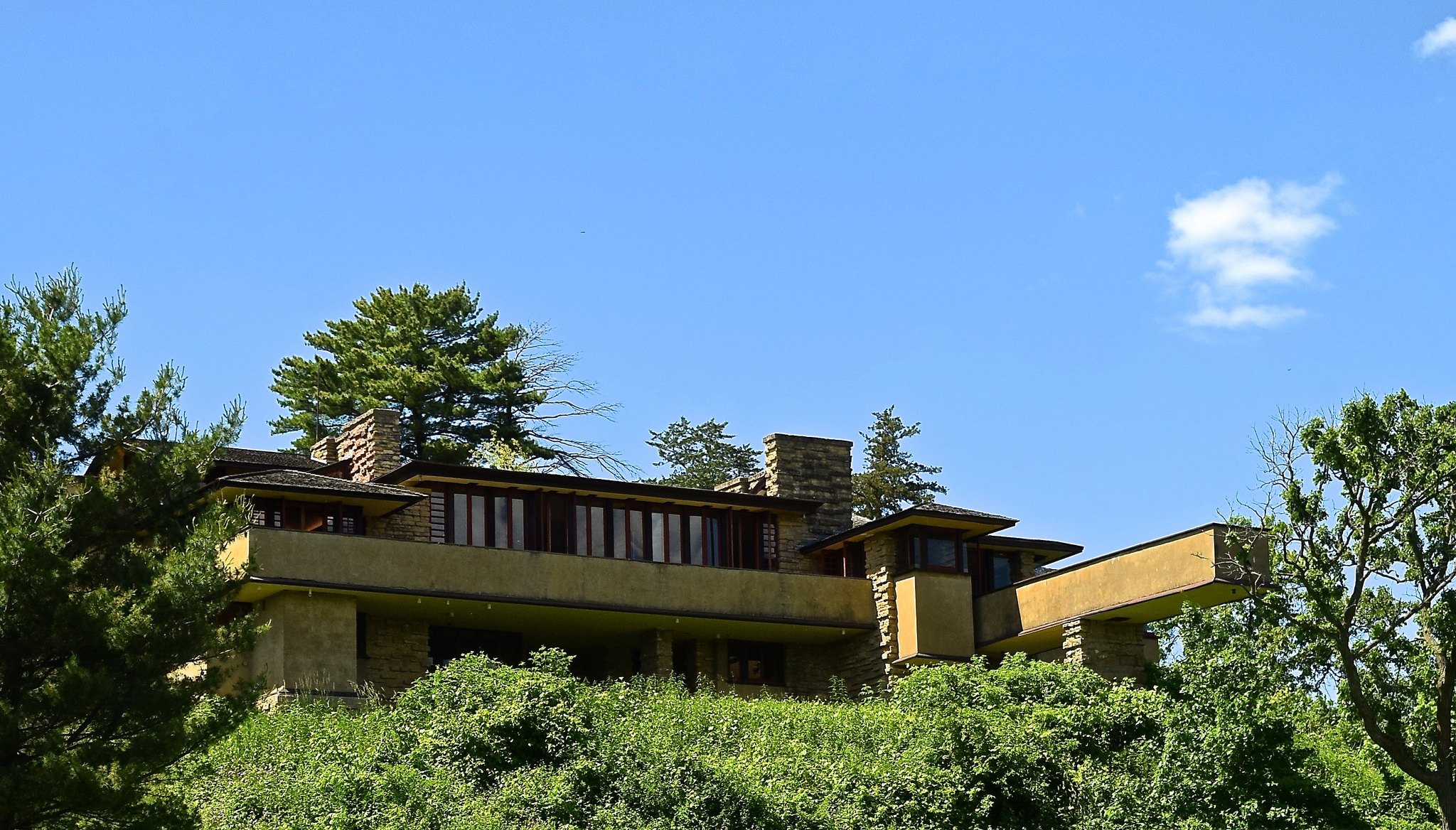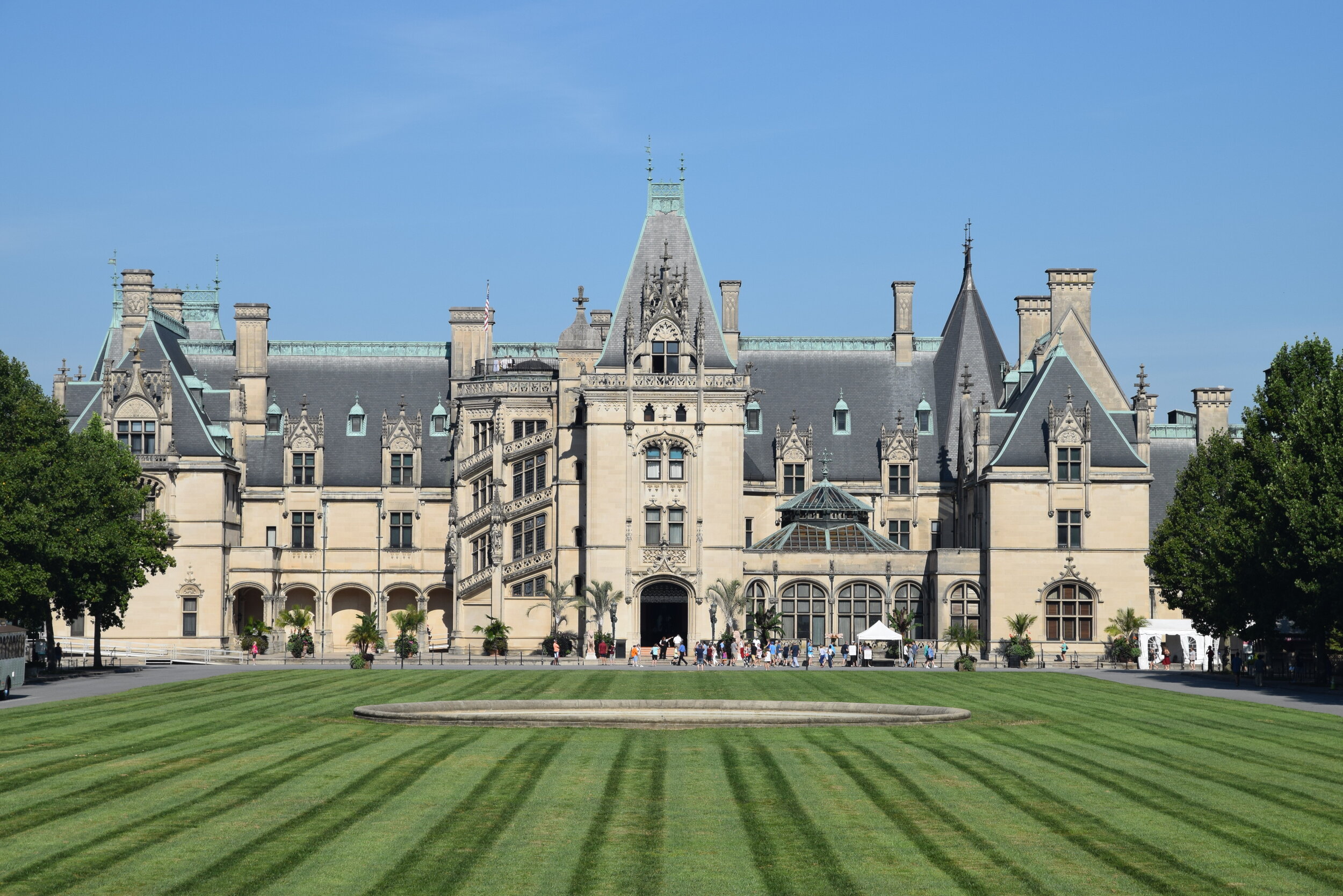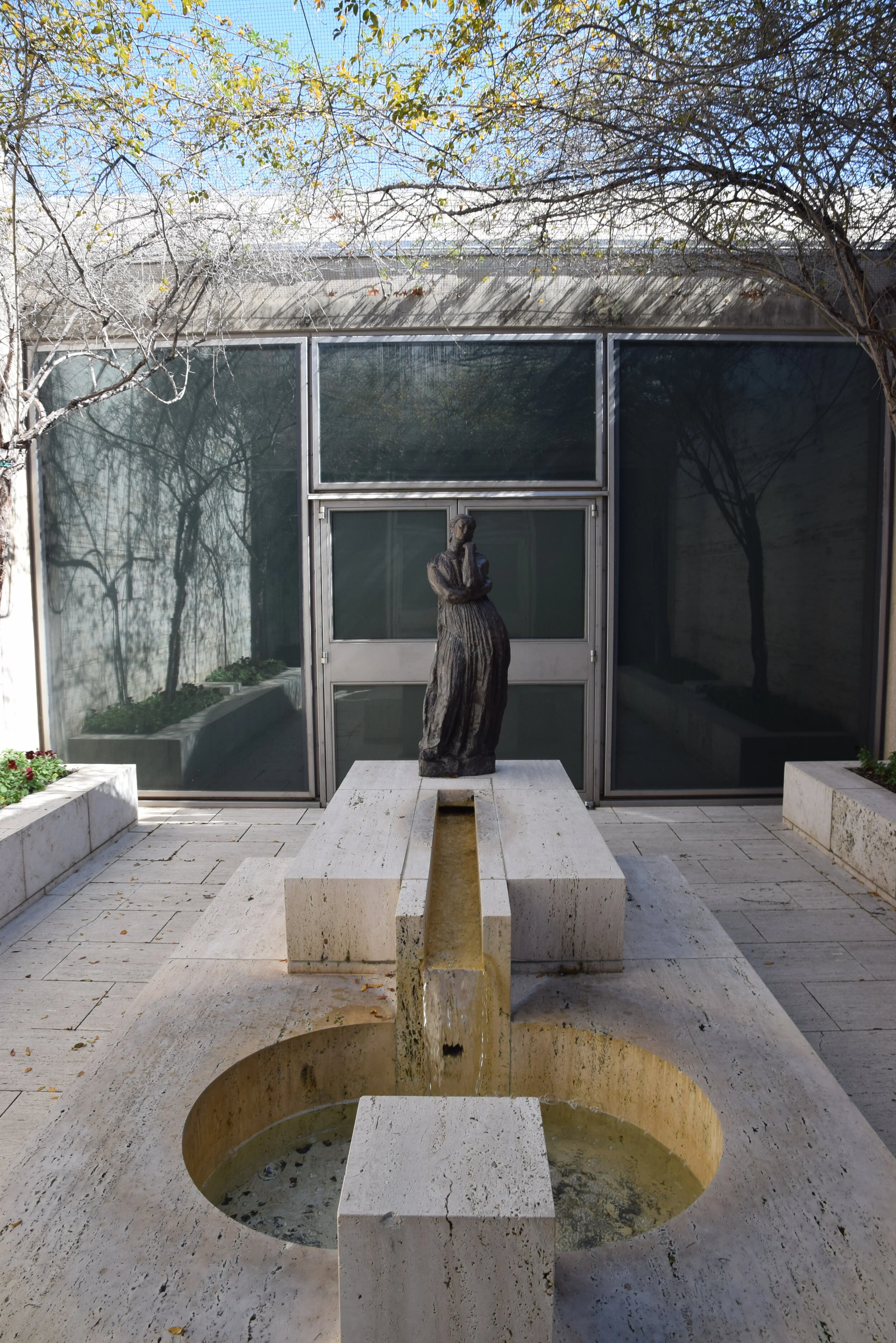___[=== PostMODERN Post ===]___
/A stack of books on Home Design in Venturi's Living Room
Postmodernism often gets a bad rep. It is a frequent target of intellectuals, who treat projects in its style with disdain and seldom cite it as a favorite stylistic movement. Critics refuse to take it seriously and speak dismissively of it as architecture with meaningless decoration. The style is admittedly more decorative than modernism, because in fact it emerged from a desire to break free from modernism and its “less is more” rules -- rules that some designers felt created simple and cold forms with little concern for the people who use them.
AIA Landmark Building PLaque mounted by the house entrance
One such designer is Robert Venturi, who famously quipped, “less is a bore.” His compelling book, Complexity and Contradiction in Architecture, explains his architectural philosophy. Although he is quick to point out that he never intended to start a design movement, that was in fact the result, beginning with The Vanna Venturi House, which he designed for his mother in 1964.
Off-center fireplace with an enlargement of the 2005 USPS stamp on the mantel
The Vanna Venturi House has become the postmodern icon, referenced in countless architectural history books, memorialized in the US Postal Service’s Masterworks of Modern American Architecture stamp series in 2005, and celebrated recently in PBS’ 10 Buildings that Changed America. The design is certainly important historically, but it also represents quality work. A closer look at The Vanna Venturi House can help gain understanding of how beautiful Postmodernism can be.
Exterior
The Iconic Split Gable Front Facade
Perhaps the most noticeable part of the house is its broken, or split, gable. A gabled roof is a common form in residential construction. Here, though, its split exposes a very large chimneystack, another iconic residential form, that seems to float over a large glass window. This creates an image both familiar and funny at once, certainly a turnoff for many critics. Along with the peculiar and asymmetrical front façade window placement and two bands of trim on the façade, the roof makes the house look strange alongside its neighbors.
Interestingly, moving around the house exposes how much its front is really a façade that masks how the roof and other parts of the house change within it. For instance, the real chimneystack only occupies a small portion of the large form visible from the front, which actually hides a sloping roof with sidelights for the second-story master bedroom. A look at the side of the house also reveals two doors leading from first floor bedrooms, each with its own outside access.






Interior
An open and human scaled space full of natural light
Remember Venturi’s book on architectural complexity? The Venturi House has never been open to the public like Fallingwater or other architecturally famous houses and its familiar yet bizarre exterior makes it hard to predict what its interior is like. Upon entering, the interior presents an open space, but one on a human scale: a small dining area adjacent to the kitchen looks into a living room with a large fireplace and an entire wall of books that serves as the library. A second look at the space reveals a massive amount of beautiful, natural daylight throughout the first floor, simultaneously brilliant and cozy. Paradoxically, the strange exterior forms and asymmetrical window placement allow for this wonderful interior space.
Amazingly, this bastion of oddball postmodernism feels remarkably like home, a beautiful and complex architectural design, worlds apart from the simple application of ornamental forms for which the movement takes criticism. To simply look at the building’s outside form and critique its eccentricity is to miss the house's greatest success. Robert Venturi has thoughtfully created a structure worthy of living in, one intended for his own mother, no less.







Also in The Philly Area








The Venturi house is located in Germantown, a historic neighborhood in Philly with plenty to see and do. A short walk from Venturi’s house is the modern Margaret Esherick House designed by renowned architect Louis Kahn. Downtown Philadelphia has a lot of offer architecturally too. In fact, from May 19-21,the city will host the 2016 National AIA (American Institute of Architects) Convention and Exhibit. While thousands of architects will meet in the Philadelphia to learn about the latest trends and technologies in architecture, there are two Philly Photo Tours open to anyone interested in learning about the city and its architecture. Photo tours are a wonderful opportunities to explore the city and come away with some photographic souvenirs.







